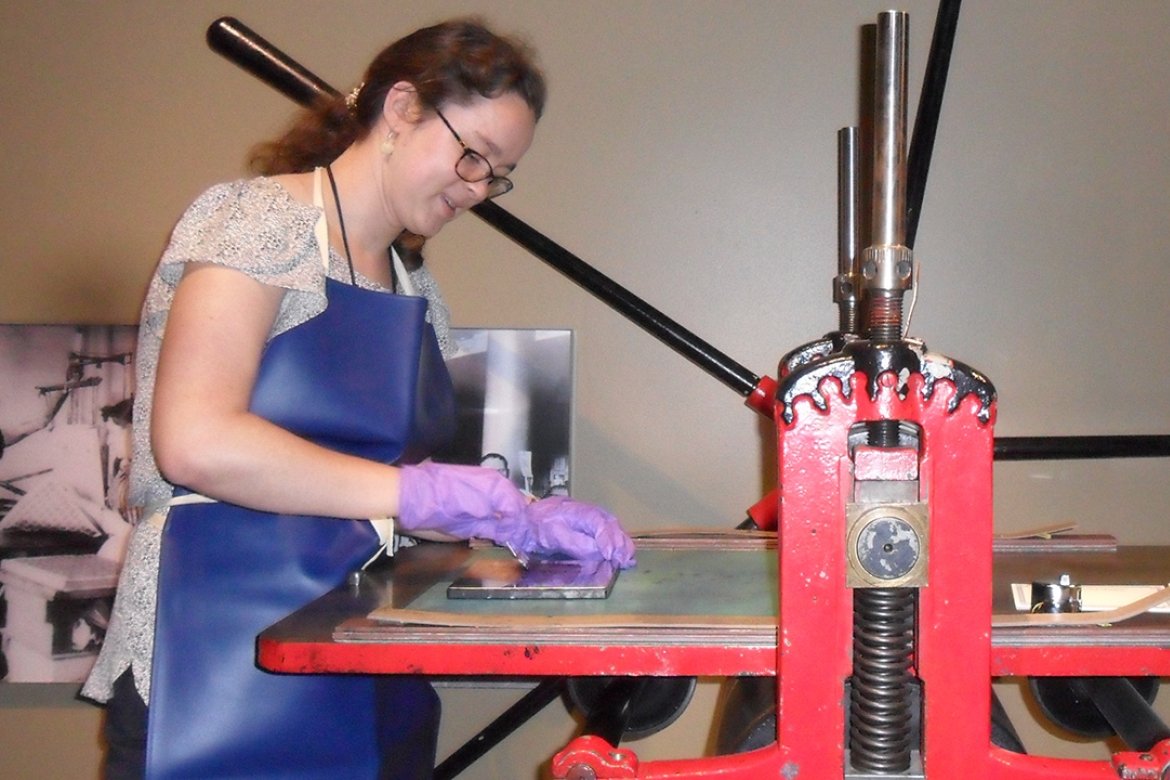Teaching Postal History

After interning at the Postal Museum, I have a greater appreciation for the postal service, the art of stamps and postal history.
Major: History
Internship Organization: Smithsonian National Postal Museum, Washington DC
During the summer of 2014, Phoebe completed an internship with the Education Department Intern at the Smithsonian National Postal Museum in Washington, D.C. The museum's mission is to interpret collections related to the postal system and use the collections to educate the public on the history and continued development of stamps, mail and the postal system.
Phoebe's main project for the summer was to develop a story time program serving children aged 3-5 that visited the museum during the school year. She chose books about the postal system and mail and wrote scripts for each of them to be used by the facilitators of the story time; created "museum explorer" bags to help families discover the museum at a Pre-kindergarten level after the story time finished; created a book list and Top 10 Places to Check Out with Your Child self-guide; and wrote to nineteen different publishers requesting book donations to add to the new Byrne Loft library. The summer culminated in a Family Postal Day, where Phoebe ran the story time four different times, with 24 families participating in the program.
Phoebe's additional roles at the museum included sitting in on Smithsonian and USPS meetings; running demonstrations of the Spider Press, a press used to print stamps in the 19th century; doing walk-throughs of the museum; and staffing the Information Desk once a week. Every Friday, she had the day to spend in-depth at a museum of her choice and analyze their museum education approaches.
Highlights of the summer internship included attending an exhibit opening, sitting in on an exhibit planning meeting, touring the Collections department, receiving multiple book donations in response to her letters, observing story times at the Kreeger Museum and DC Public libraries, meeting the Postmaster General and giving a tour to the artist of a new stamp.
Phoebe explains that the many skills she gained at Mount Holyoke prepared her for her internship at the National Postal Museum,
“I constantly had to think on my feet, be willing to revise and edit and speak up in meetings, all things common in the Mount Holyoke classroom environment. My history classes did a good job in making me think about objects and history in relation to how things are today.”
When explaining the history of the building or leading a demonstration, she found herself relating the history of the object to things the audience could relate to in the 21st century. This dynamic approach to history helped spark interesting questions from both children and adults. Phoebe suggests,
“To anyone looking to intern at a museum, I'd recommend starting at a smaller museum and then move on to trying a larger museum. My experiences at museums in my hometown and at the Skinner Museum helped me learn how a museum works, the different departments in a museum and things visitors are looking for when they visit a museum.”
When applying to internships, Phoebe's experiences helped her know what museums were looking for and good things to say in interviews. Her advice to aspiring interns is,
“apply to places that feature history you'd like to learn more about. I've been an avid letter writer my entire life, but did not know much about the history of the postal service. After interning at the Postal Museum, I have a greater appreciation for the postal service, the art of stamps and postal history. It is a communication history that is present throughout all of American history.”